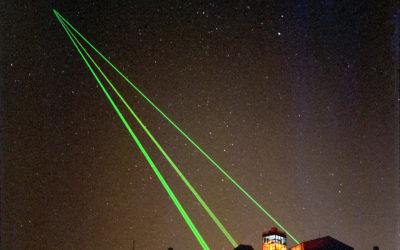“God mode”, for those who aren’t gamers, is a mode of operation (or cheat) built into some types of games based around shooting things. In God mode you are invulnerable to damage and you never run out of ammunition.
Practical Jamming of a Commercial 5G Radio System at 3.6 GHZ
Practical Jamming of a Commercial 5G Radio System at 3.6 GHZ
Practical Jamming of a Commercial 5G Radio System at 3.6 GHZ
Abstract
Fifth-generation (5G) mobile technology has attracted interest from armed forces worldwide due to its many new possibilities for communication. Military operations may face threats in the electromagnetic spectrum, such as intentional jamming of the radio signals. Insights into the effect of jamming are needed to assess operational scenarios in which 5G is safe for military use. This paper presents a study based on an experiment of radio jamming on a commercial 5G system typical for deployments in mobile operators’ networks. The prime objectives of the study were to identify a commercial 5G radio system’s response to jamming and determine the jamming signal power needed to disrupt the 5G communication. The 5G base station was equipped with a massive Multiple-Input Multiple-Output (MIMO) antenna operating at the 3.6 GHz frequency band. The analysis results showed that the 5G radio system managed to adapt to the jamming by lowering the modulation and coding order until a breaking point was reached at which the interfering signal overcame the UE signal in the uplink, leading to the 5G connection being terminated. The required level of jamming signal strength needed to disrupt the communication agreed with the results from theoretical studies.
Introduction
Mobile communications take an essential role in society and continually receive more interest among first responders and armed forces since they need secure, high-bandwidth, and cost-effective communications. Fifth-generation mobile technology brings several critical new possibilities for future military operations. However, reliability and robustness against intentional attacks on communication are crucial concerns for adopting 5G technology in military operations. One such threat is radio jamming.
The 5G radio interface, New Radio (NR), enables new features like massive Multiple-Input Multiple-Output (MIMO) technology and a highly flexible structure of radio frames that might improve the robustness against jamming compared with previous generations, i.e., 2G, 3G, and 4G. However, 5G NR, as a civilian technology, was not explicitly designed to operate in a challenging RF environment. Before adapting 5G in military use cases, it is crucial to evaluate the vulnerabilities and possible disruptions to the radio communication system, which can help evaluate the threat level and the possibility of being jammed.
5G is a complex system, making it challenging for a theoretical study to consider all the different aspects of a real-world 5G system. Therefore, we conducted a jamming experiment targeting commercial 5G equipment to create a practical, real-life scenario. The experiment is, to our knowledge, the first to test jamming on a commercial 5G Base Station (BS) and off-the-shelf User Equipment (UE). The 5G system was equipped with a massive MIMO antenna operating on the 3.6 GHz frequency band in Time-Division Duplexing (TDD) mode, all relatively new in mobile communications. The 5G radio communication was exposed to barrage jamming, targeting the entire transmission bandwidth, and partial-band jamming, targeting the downlink synchronization signals.
The experiment’s primary objective was to analyze how the commercial 5G radio system is affected by and responds to a jamming attack. The experiment’s secondary objective was to identify the jamming signal power needed to disrupt the 5G radio communication and verify if the real-world results reasonably match the theoretical results from the literature. The rest of the paper is organized as follows. Section 2 presents relevant theoretical studies related to jamming of 4G, 5G and massive MIMO. Section 3 describes the setup of our 5G jamming experiment. Section 4 introduces parameters used to analyze the 5G performance during jamming. Section 5 presents the experimental results, and Section 6 discusses the results. The conclusion is given in Section 7, and potential future work is suggested in Section 8.
This excerpt was republished under a Creative Commons license to point warfighters and national security professionals to reputable and relevant war studies literature. Read the original article here.

Agnius Birutis and Anders Mykkeltveit are researchers from the Norwegian Defence Research Establishment (FFI) and co-authored this paper for the International Conference on Military Communications and Information Systems. This article does not constitute endorsement nor sponsorship of Analyzing War by the author/s.
Related Articles
Understanding the building blocks for Australia’s quantum future
Australia is undergoing an exciting period of strategic technology policy review and development. The release of its first National Quantum Strategy this week committed the government to building the world’s first error-corrected quantum computer. This is a strategically important technology that has the potential to improve productivity and supply chain efficiency in diverse industries, lower costs across the economy, help reduce carbon emissions and improve public transportation.
Japan needs stronger deterrence than its new defense strategy signals
Since World War II, Japan had long chosen not to possess long-range strike capabilities that could be used against enemy bases. But the Japanese government changed course in December 2022 when it adopted the new national defense strategy (NDS), which included a commitment to acquiring a so-called counterstrike capability. But in order for this new strategy to contribute to deterrence and alter the nation’s defensive role as the ‘shield’ in its alliance with the United States, Tokyo needs to go further than what the NDS outlines.



